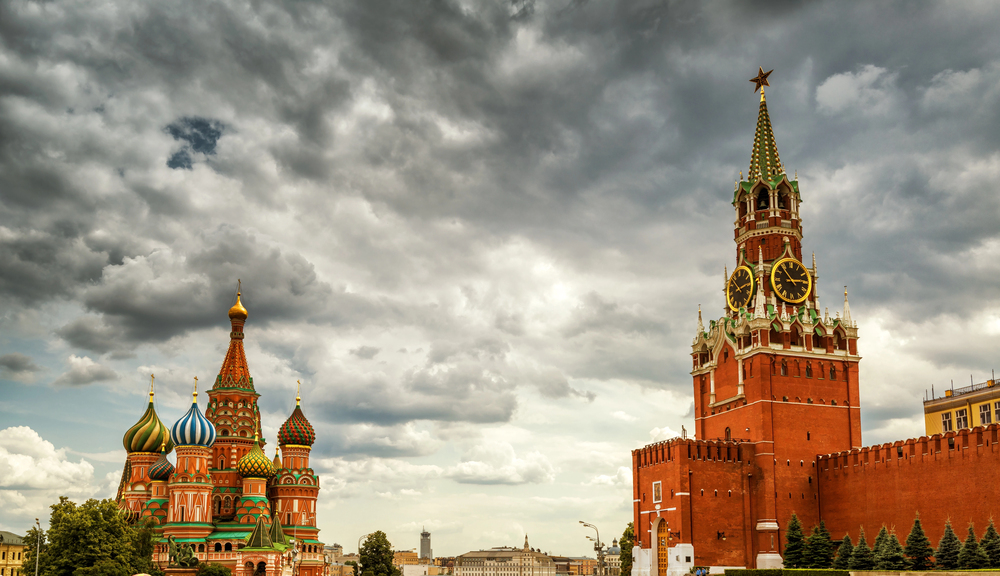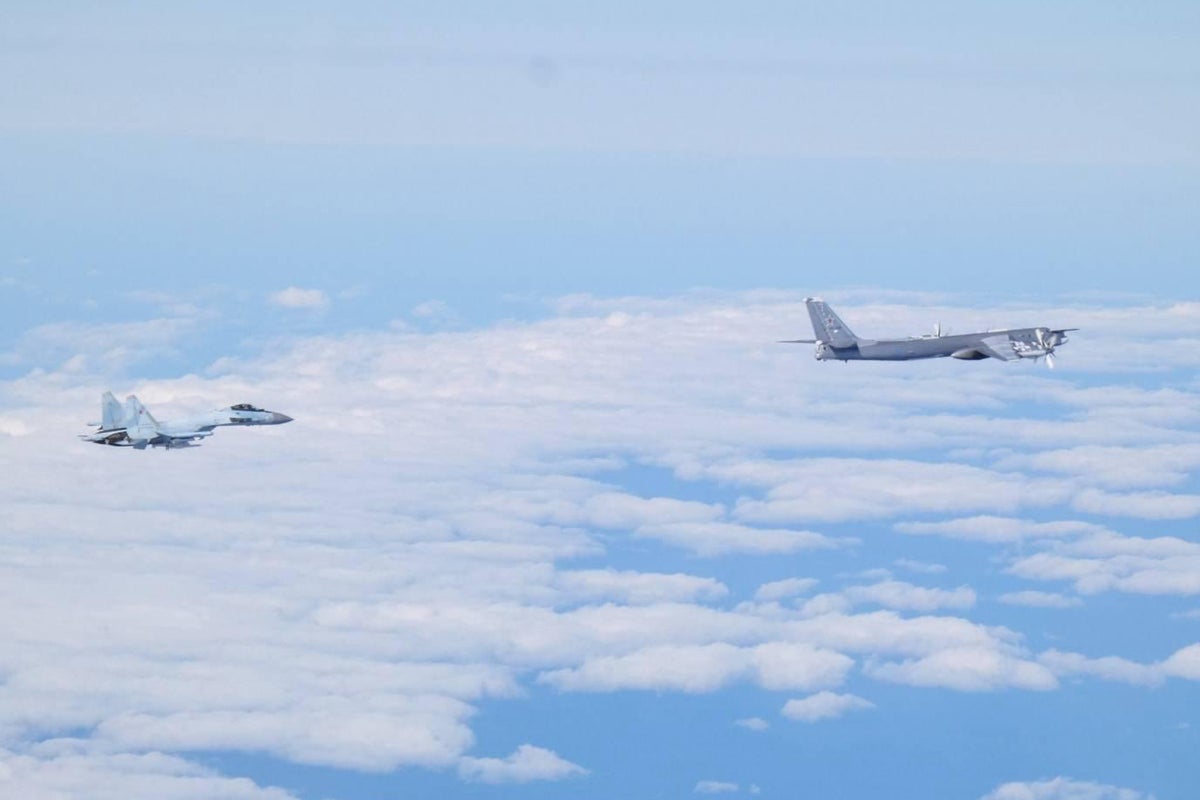Fake Bomb Threats Baffle the Police Across Asia

© Yonhap, via EPA, via Shutterstock


© Yonhap, via EPA, via Shutterstock


© Kazuhiro Nogi/Agence France-Presse — Getty Images


© Yuichi Yamazaki/Agence France-Presse — Getty Images


Every time North Korea deepens its support for Russia's war in Ukraine, South Korea promises to "reconsider" arming Kyiv directly. The announcements come with stern language about crossing red lines. Then nothing happens.
But focusing on what Seoul isn't doing misses what it has accomplished: pioneering an indirect support model that's proven both scalable and sustainable.
Through systematic defense exports to Poland, Romania, and the Baltic states, South Korea has enabled equipment transfers to Ukraine while navigating legal constraints and diplomatic sensitivities. This approach offers a blueprint other nations facing similar restrictions could replicate.
South Korea has rapidly become one of the world’s major arms exporters. Military hardware like K2 Black Panther main battle tanks, K9 Thunder self-propelled howitzers, and the Chunmoo multiple launch rocket system (MLRS) have become bestsellers.
The $13.7 billion deal that Poland signed with South Korea in 2022 marked the country’s arrival as a global defense supplier, not just a regional one. For Kyiv, such a trajectory carries important implications.
While many Western defense industries struggle with slow production cycles and byzantine bureaucratic processes, South Korea’s defense industries are government-funded, export-oriented, and vertically integrated. South Korean factories can deliver major weapons items within months, not years. In the war of attrition that Ukraine faces, this production speed matters as much as technical specifications.
This production efficiency forms the foundation of the indirect support model, enabling South Korea to reinforce Ukraine’s warfighting capability without violating its own policy.

South Korean law limits direct lethal weapons exports to countries involved in active conflicts. . This restriction reflects both constitutional principles and South Korea's complex security environment—particularly concerns about antagonizing China and Russia while managing the North Korean threat.
But legal constraints didn’t mean inaction. Instead of opting for a direct arms transfer, South Korea has found indirect ways to reinforce Ukraine’s defense through its neighbors — an approach that maintains diplomatic equilibrium while sustaining the flow of weapons supply.
Poland, Romania, and the Baltic countries serve dual roles: frontline NATO member states and crucial logistics hubs for Ukraine’s war effort. By expanding arms deliveries to these countries, South Korea has reinforced the strategic depth of Ukraine’s neighbors.
Poland began transferring Soviet-era T-72 tanks to Ukraine in 2022, with over 200 donated by some accounts in the early phase of the war. In August 2022, Warsaw signed an executive contract to acquire 180 South Korean K2 Black Panther tanks, with the first deliveries arriving in December 2022.

This rapid procurement of modern replacements appears to have enabled Poland to donate large portions of its older T-72 inventory during 2022-2023. The same pattern applied to artillery: South Korean K9 howitzer deliveries freed Warsaw to transfer Krab self-propelled howitzers—platforms based on the K9 design—to Kyiv.
Polish officials could justify depleting their Soviet-era tank inventory because South Korean replacements were guaranteed and arriving quickly. Without the K2 contract, Poland's transfers would have stopped after initial batches to preserve domestic defensive capacity.
Meanwhile, Romania has signed contracts for K9 howitzers, and the Baltic countries are pursuing similar acquisitions. If South Korea accelerates such defense exports, it could bolster NATO’s eastern flank and indirectly reduce Ukraine’s security burden. Furthermore, such procurement would contribute to interoperability enhancement within NATO since most of South Korea’s weapons systems have been designed in accordance with Western communications and logistics standards.
Eventually, South Korea has risen as a silent guarantor of the resilience of Ukraine’s neighboring countries and is helping to ensure that the pipeline of equipment and deterrence remains continuously open.

Ukraine’s allies often face delays in heavy equipment manufacturing and procurement—tanks, artillery, and air defense systems frequently require multi-year timelines. South Korea operates on a different schedule.
Once Poland signed the contract, South Korean factories immediately adjusted their production, and the first installment of K2s and K9s was delivered within a year. This speed helps fill credibility gaps when Western industries face production bottlenecks or political gridlocks. While Washington and Brussels debate supplemental packages, South Korean factories build and ship.

The indirect model has constraints. It takes longer than direct transfers—equipment flows through an additional link in the supply chain. It doesn't address Ukraine's most urgent needs like air defense systems, which require direct channels. And there's a legitimate question about scale: how much equipment can actually flow through backfilling versus new production?
Yet these limitations may be preferable to the alternative. South Korean public opinion polls show 82% opposition to direct weapons transfers to Ukraine. Attempts at direct support would likely face legal challenges, strain relations with China and Russia, and potentially deliver only token amounts. The indirect mechanism, while slower, enables larger-scale transfers that can be sustained over years rather than months.
In wars of attrition, sustainability often matters more than speed. Poland's $13.7 billion commitment suggests the ceiling for indirect support exceeds what direct transfers would likely achieve given domestic and diplomatic constraints.
For Seoul: Formalize what's now ad hoc. Establish a trilateral cooperation office staffed by Defence Acquisition Program Administration (DAPA) officials, NATO’s procurement specialists, and representatives from Poland and Romania. This office would track equipment flows in real time—when Poland transfers tanks to Ukraine, Seoul would receive immediate notification to accelerate replacement deliveries. Additionally, establisha dedicated logistics and maintenance hub in Central Europe to sustain long-term operational readiness for South Korean weapons systems operating in NATO countries.
For Washington: Integrate South Korea’s production cycle into NATO supply-chain. Include South Korean defense firms in NATO’s industrial expansion initiatives or joint production projects. This diversifies suppliers and strengthens transatlantic defense capacity.
For Kyiv: Establish industrial cooperation offices both in Kyiv and Seoul to track backfill mechanisms. Pursue co-production projects in areas like drones and armored vehicles to deepen bilateral defense cooperation and reinforce Ukraine’s industrial capability in the long run.
For other constrained allies: Study the South Korean model to design politically feasible support strategies that sustain global deterrence without violating domestic political red lines.
Seoul's indirect support model represents more than a workaround for legal constraints. It demonstrates that constrained allies can provide meaningful, sustained support through systematic backfilling arrangements. If Japan, the OAE, and other capable nations replicate this approach, Ukraine's support network could expand significantly without requiring direct transfers that many countries cannot politically or legally provide.
The debate shouldn't be whether South Korea should abandon indirect support for direct transfers. It should be which other countries will adopt Seoul's blueprint.
Editor's note. The opinions expressed in our Opinion section belong to their authors. Euromaidan Press' editorial team may or may not share them.
Submit an opinion to Euromaidan Press


© Chang W. Lee/The New York Times


© Chang W. Lee/The New York Times


© Haiyun Jiang/The New York Times


© Haiyun Jiang/The New York Times


© Haiyun Jiang/The New York Times


© Haiyun Jiang/The New York Times


© Kyodo, via Reuters


© Haiyun Jiang/The New York Times


© Haiyun Jiang/The New York Times


© Haiyun Jiang/The New York Times


© Jiji Press, via Agence France-Presse — Getty Images


© Atul Loke for The New York Times


© The Asahi Shimbun, via Getty Images

Russia says the bombers completed a routine flight over ‘neutral’ international waters

© Shinjiro Koizum


© Erin Schaff/The New York Times


© Doug Mills/The New York Times


© Florence Lo/Reuters